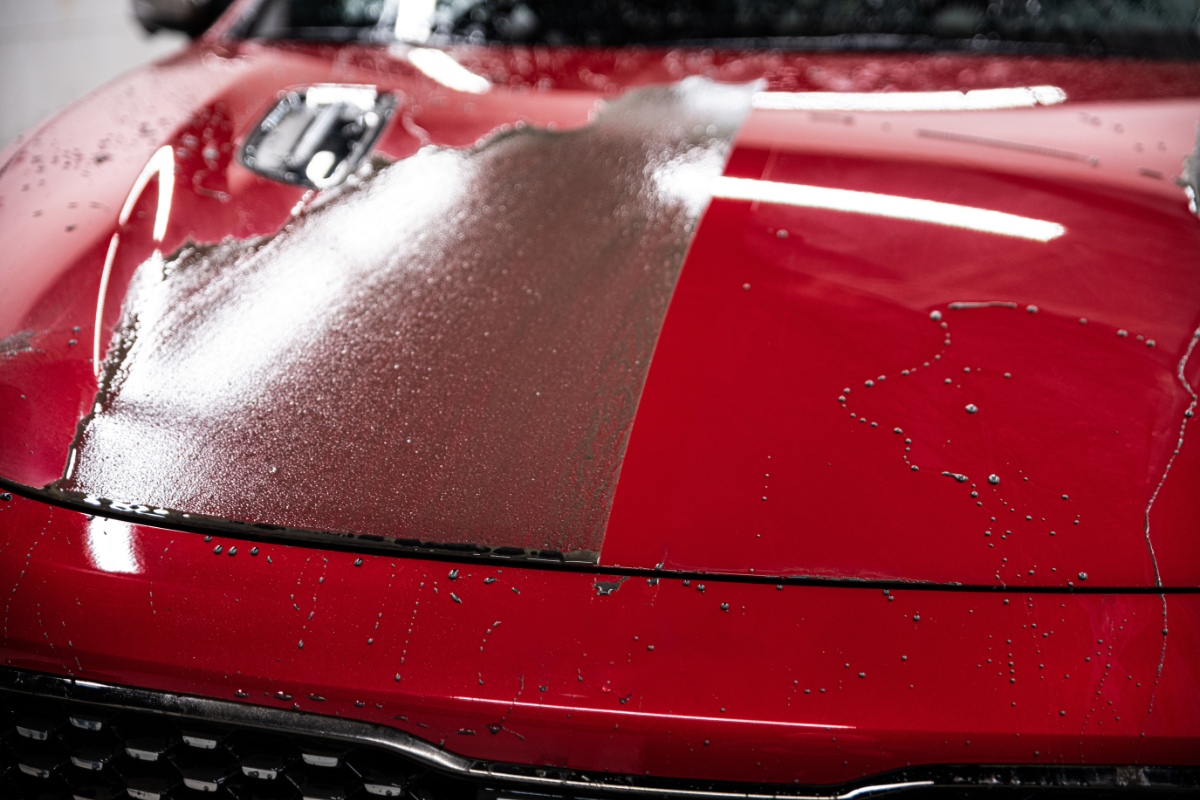Choose expert-installed paint protection film for a ultra-clear layer of protection.
Choose expert-installed paint protection film for a ultra-clear layer of protection.
Blog Article
A Comprehensive Overview to the Types of Ceramic Covering on the Market
Ceramic finishes have become a crucial option across numerous industries because of their unique buildings and applications. From silica-based formulas known for their robustness to hybrid choices that combine multiple benefits, the selections available can be overwhelming. Comprehending the nuances of each kind, including their details benefits and ideal usage cases, is essential for making notified decisions. As we explore the distinct attributes and applications of these coatings, the implications for efficiency and longevity come to be increasingly obvious, elevating questions about which type could ideal match your needs.
Recognizing Ceramic Coatings
Ceramic coatings are advanced protective services that have gained popularity in various markets, especially in automobile and aerospace applications. These finishes include a fluid polymer that, when cured, creates a sturdy, hydrophobic layer externally of the substrate. This layer gives improved resistance to environmental contaminants, UV radiation, and chemical direct exposure, thereby prolonging the life and aesthetic allure of the underlying product.
The basic component of ceramic finishes is silica, which adds to their hardness and resilience. The application procedure commonly involves surface prep work, application of the finishing, and curing, which can be attained through heat or UV light. Once cured, ceramic finishings display outstanding bonding residential properties, enabling them to adhere strongly to a range of surfaces, consisting of metals, plastics, and glass.
In enhancement to their safety features, ceramic layers likewise offer simplicity of upkeep. Their hydrophobic nature lowers the adherence of dust and grime, making cleansing easier and less regular. In general, the adoption of ceramic finishes represents a substantial advancement in surface area defense modern technology, providing both useful and aesthetic benefits across multiple fields.
Kinds of Ceramic Coatings
Numerous kinds of ceramic coatings are readily available, each developed to satisfy specific performance needs and applications - Paint Protection Film. One of the most common kinds include:
Silica-based Coatings: These finishes primarily consist of silicon dioxide and are known for their durability and chemical resistance. They are widely made use of in automotive and industrial applications.
Titanium Dioxide Coatings: Renowned for their photocatalytic residential or commercial properties, titanium dioxide layers are often used in settings where self-cleaning and antifungal properties are preferable, such as in structure products and vehicle coatings.
Zirconia Coatings: Identified by their high-temperature stability and thermal resistance, zirconia layers are made use of in applications such as generator engines and high-performance automotive parts.
Alumina Coatings: Exhibiting exceptional hardness and thermal security, alumina coatings are often made use of in wear-resistant applications, consisting of cutting tools and industrial machinery. - Auto Detailing
Hybrid Coatings: Combining the residential properties of various materials, hybrid coatings offer boosted efficiency attributes, making them ideal for distinct and demanding applications.
Each kind of ceramic finish offers distinctive functions, permitting individuals to select the most proper solution based upon particular ecological conditions and efficiency needs.
Benefits of Ceramic Coatings
Ceramic finishes, in specific, deal many advantages that make them increasingly prominent among manufacturers and customers alike. These coatings are immune to scrapes, chemicals, and UV rays, ensuring that the underlying surface area remains safeguarded over time.
Along with sturdiness, ceramic layers supply excellent hydrophobic residential or commercial properties, enabling for simple cleansing and upkeep. This water-repellent nature lessens the adherence of dirt, crud, and other contaminants, which can lengthen the visual allure and performance of the surface area. In addition, ceramic finishings can dramatically boost thermal resistance, making them ideal for applications that sustain high temperatures.

Application Refine
When using ceramic finishes, a careful method is essential to accomplish optimal outcomes. A clean surface guarantees proper bond of the coating.
When the surface area is prepped, the next step is to use the ceramic layer. The covering must be applied in slim layers, as thicker applications can lead to uneven finishes.
After application, the layer calls for a certain treating time, generally ranging from a couple of additional info hours to a complete day, depending on the item. Complying with these steps faithfully will take full advantage of the performance and longevity of the ceramic finish, supplying a sturdy safety layer for the surface.
Maintenance and Durability
To guarantee the longevity and efficiency of a ceramic covering, routine upkeep is essential. Ceramic layers, understood for their resilience and safety top qualities, require details care routines to maximize their life expectancy and efficiency.
In enhancement to routine cleaning, routine evaluations are vital. Try to find signs of wear or damage, such as hydrophobic residential properties decreasing or surface blemishes. If required, a light gloss might be put on rejuvenate the layer without stripping it away.
Furthermore, the application of a booster spray can enhance the covering's hydrophobic impacts and restore its gloss. This is particularly advantageous for finishes that have actually been in usage for an extended duration. Inevitably, by adhering to these maintenance methods, one can dramatically prolong the life of a ceramic coating, making certain that it remains to provide optimum defense against ecological factors and maintain the visual appeal of the vehicle.
Conclusion

Report this page